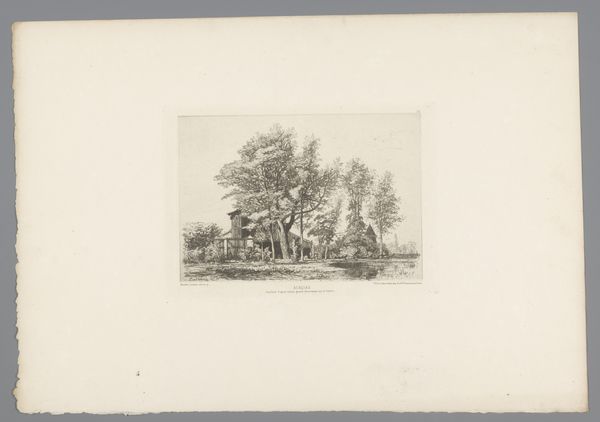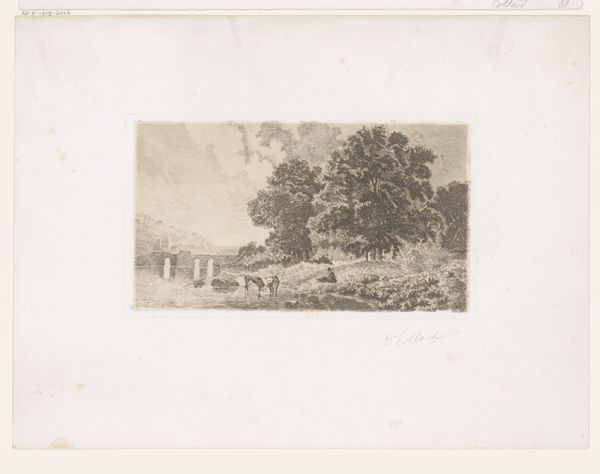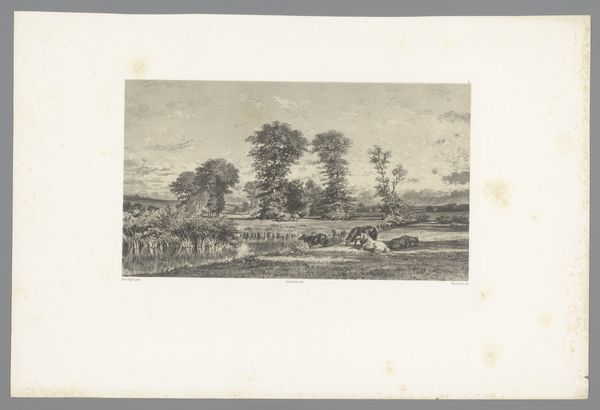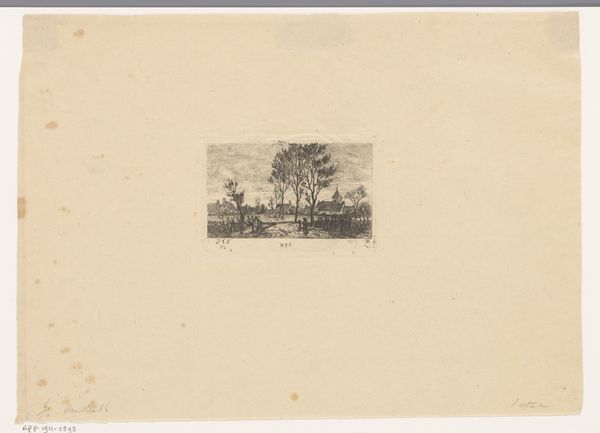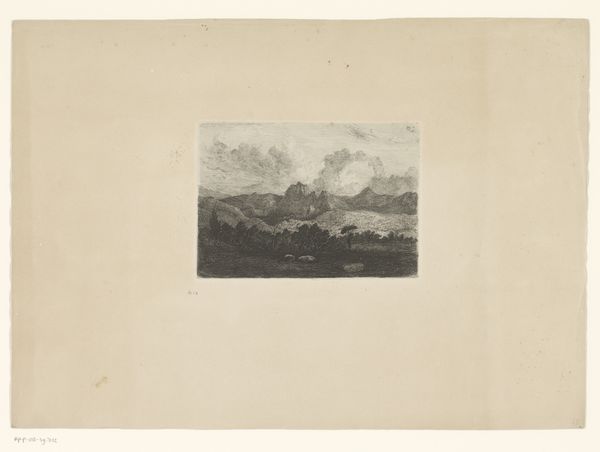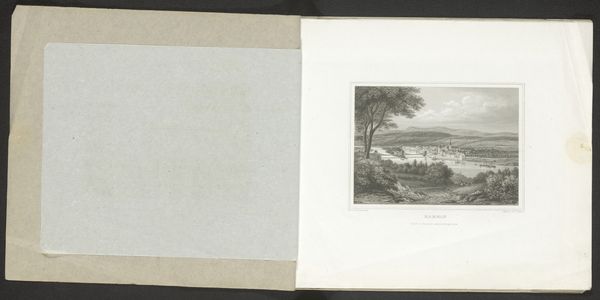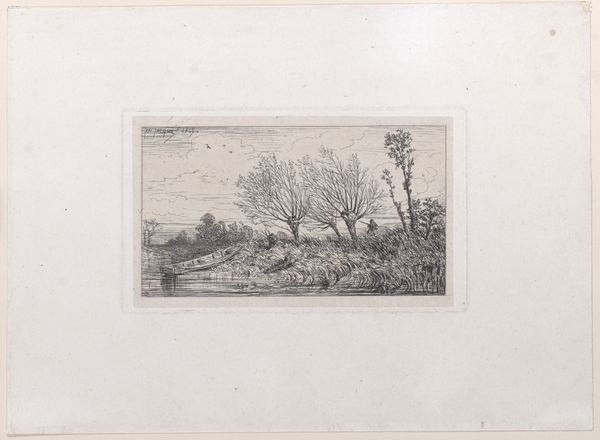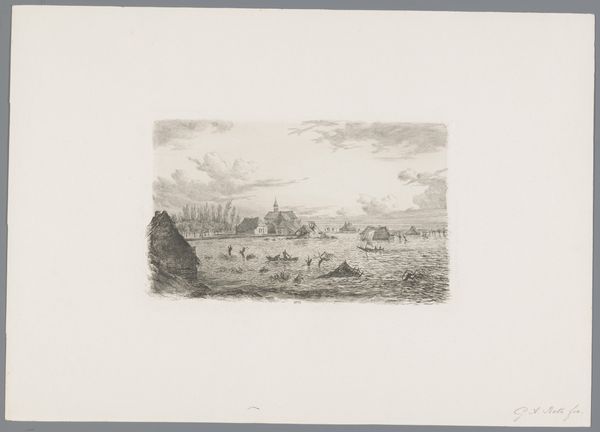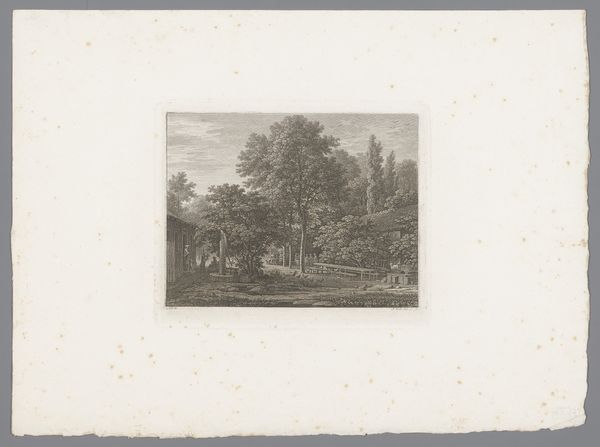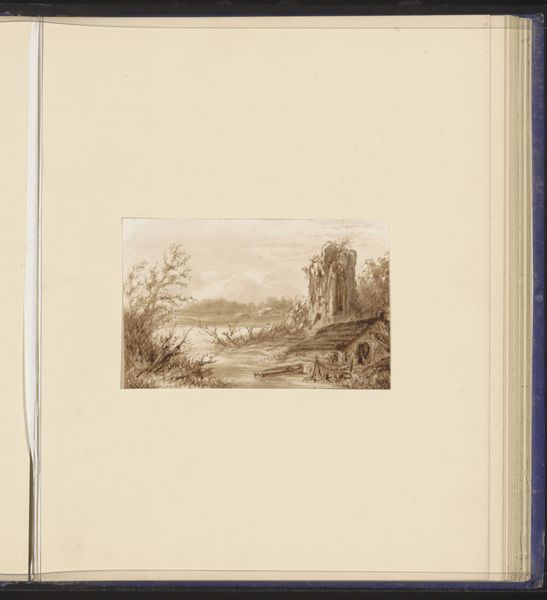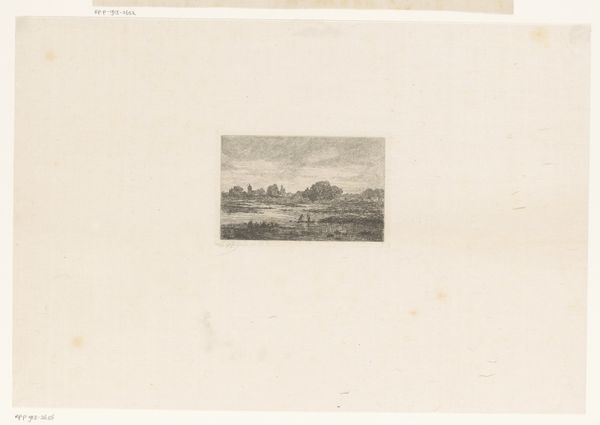
drawing, print, etching
#
drawing
#
ink painting
# print
#
etching
#
landscape
#
northern-renaissance
#
realism
Dimensions: 109 mm (height) x 148 mm (width) (Plademål)
Editor: This is Niels Skovgaard's "Farmhouse in Nestelsø," created in 1883. It's an etching. It feels quite intimate and offers an everyday glimpse of rural life in Denmark, but it is a fairly straightforward scene. How would you interpret this work in its historical context? Curator: Looking at it from a historical lens, what strikes me most is its subtle commentary on the changing social landscape of 19th-century Denmark. Etchings like these, while seemingly simple, served to document and, in a way, legitimize the lives of rural communities amidst increasing industrialization and urbanization. Consider the role of the artist as a sort of visual historian. What stories might he be telling through his choice of subject and medium? Editor: That’s interesting. I hadn't considered the act of documentation as a political act in itself. It almost feels like a romanticized view, though, doesn’t it? Curator: Perhaps. But what purpose would romanticization serve? The image circulated through prints. The artist likely intended it for a growing urban middle class, eager for a connection to a perceived simpler past or a more 'authentic' Danish identity. The etching’s medium makes it reproducible and affordable. It facilitated wider consumption. In what way could that affect society at the time? Editor: So, it’s not just about showing a farmhouse, but about constructing a specific image of Danishness for a particular audience, reinforcing certain social values? Curator: Precisely. It makes one consider the role museums like this one play. Do we simply preserve art, or do we also perpetuate certain historical narratives? Editor: Wow, I will definitely view similar landscape works with a different perspective. Curator: And hopefully, consider how their reception is also deeply intertwined with how museums shape collective memory.
Comments
No comments
Be the first to comment and join the conversation on the ultimate creative platform.
